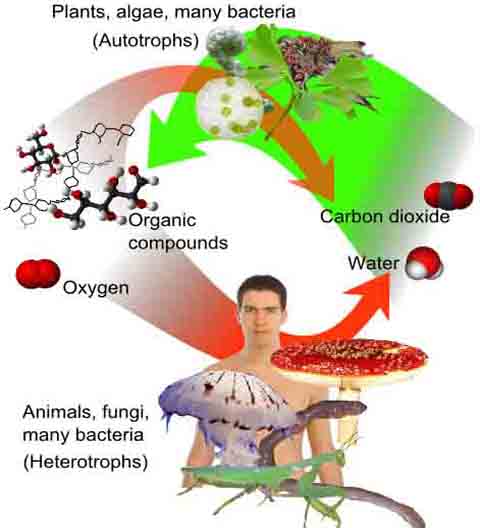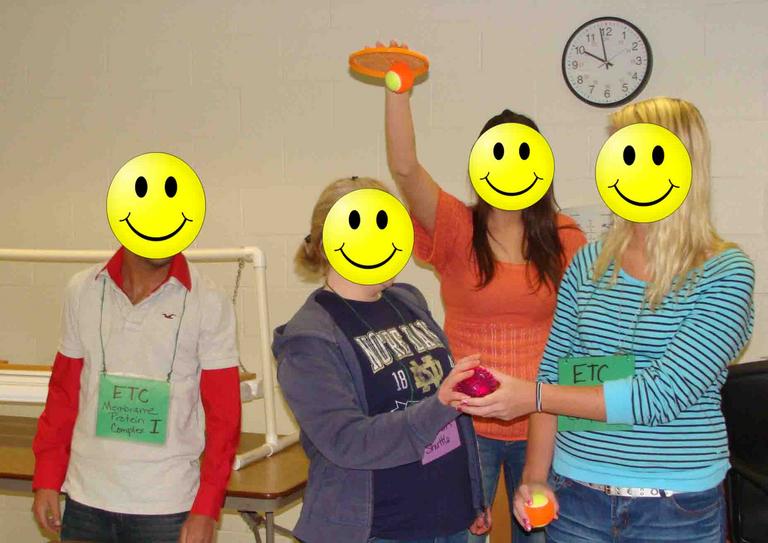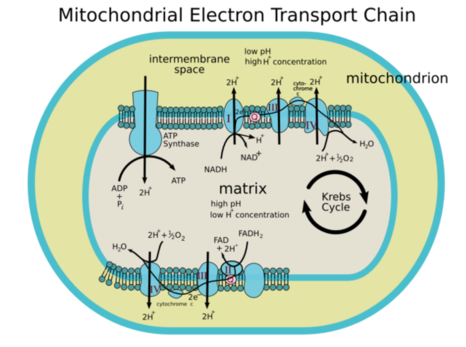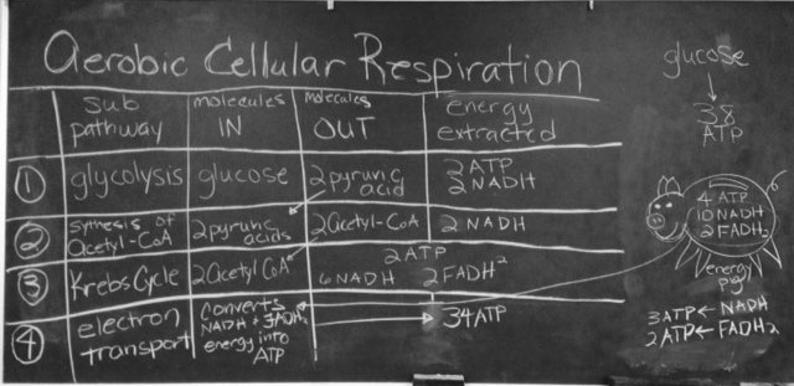 | ||||
Metabolism: Steps of Aerobic Respiration - P2
 | ||||
See the
for a fun, hands-on way to teach students the steps of the ETC!
Page last updated
10/2015
SPO VIRTUAL CLASSROOMS
Aerobic Respiration Sources & Resources
- Cellular Respiration animation by Jay Phelan, “What is Life? A Guide to Biology”, W. H. Freeman & Co.
- “The Body Machine” music video by School House Rock.
- How NAD+ Works animation and quiz from McGraw-Hill.
- Glycolysis animation and quiz from McGraw-Hill.
- Krebs Cycle Animation & Quiz 1 from McGraw-Hill.
- Krebs Cycle Animation & Quiz 2 from McGraw-Hill.
- Electron Transport Chain animation from Molecular & Cellular Biology Learning Cntr.
- Electron Transport Chain click through animation by Graham Kent Bio231 Cell Bio.
- Electron Transport System & Formation of ATP (Quiz 1) by McGraw-Hill.
- Electron Transport System & ATP Synthesis (Quiz 2) by McGraw-Hill.
PAGE 2 < Back to Page 1
End of Article
The SPO website is best viewed in Microsoft Explorer, Google Chrome or Apple Safari.
Electron Transport Chain
The most significant production of ATP
occurs through a stepwise release of energy from a series of oxidation-reduction reactions in the
The electron transport chain consists of several membrane-bound carrier molecules that pass electrons from one to another and ultimately to final electron acceptor, oxygen (O2). We need to breathe in oxygen in order to complete electron transport.
Protons can move back across the mitochondrial membrane, flowing down this gradient, with the help of ATP synthase, and enzyme that phosphorylates (adds a phosphate) to adenosine diphosphate (ADP), creating adensoine triphosphate ATP.
By the end of aerobic cellular respiration, a total of 38 molecules of ATP are formed from one molecule of glucose.
Energy from electrons is used to pump protons (H+) across the inner membrane of the mitochondria into the intermembrane space, establishing a proton gradient, a difference in ion concentration on either side of a membrane. Proton gradients have potential energy available for cellular work.
Table Summarizing the Four Subpathways of Aerobic Respiration
Click here for a blank printout of this table.
You have FREE access to a large collection of materials used in a college-level introductory biology course. The Virtual Biology Classroom provides a wide range of free educational resources including PowerPoint Lectures, Study Guides, Review Questions & Practice Test Questions.





